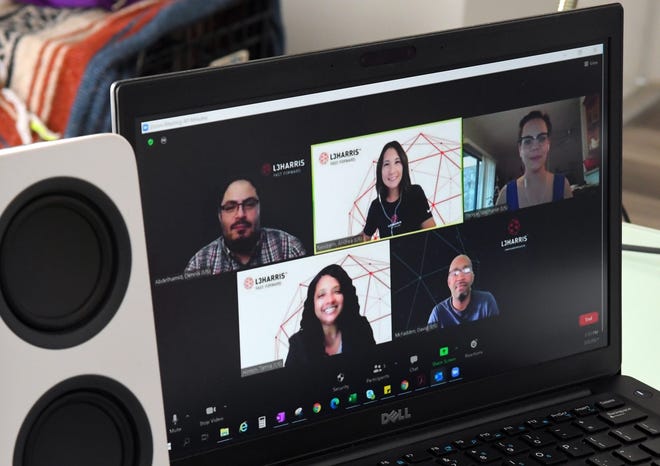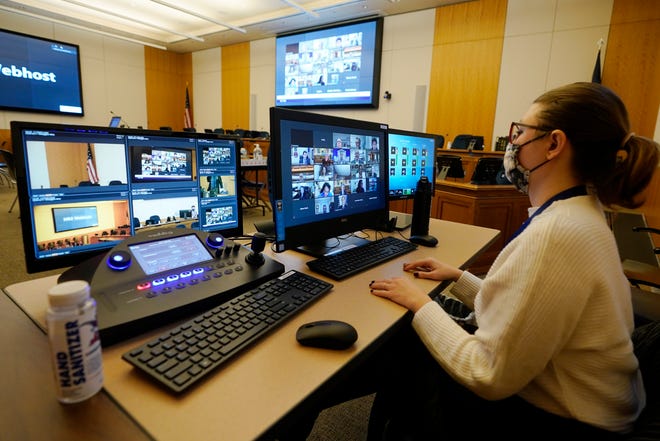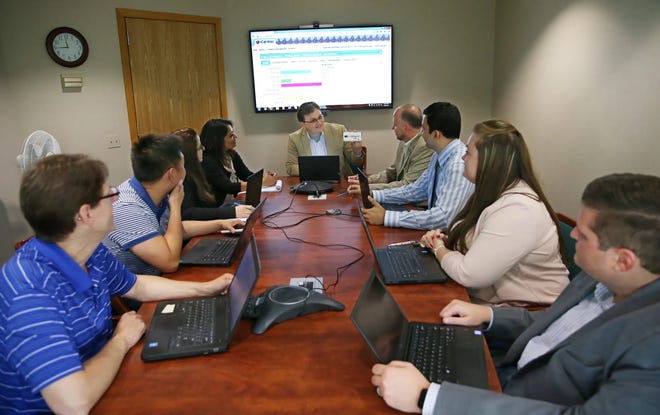
This article is more than
3 year oldBefore the pandemic, Logikcull had an office in downtown San Francisco and, like most tech companies, it had a lot of meetings.
After COVID, the company bought out the office lease and 110 employees scattered across 40 states and four countries.
Just as other companies were adding online huddles to bring people together during remote work, CEO Andy Wilson stopped to ask himself: Could all these meetings be emails? The answer, he says, was often yes.
Logikcull cut the number of meetings in half and began relying on asynchronous communication tools to stay connected across five time zones.
With fewer meetings, productivity rose. So did employee morale.
“Meetings just suck. They can sap the life out of you,” Wilson said. “The fact that we are not wasting people’s time in BS endless meetings has contributed to their quality of work life.”
How diverse is corporate America?:There are more Black leaders but white men still run it
Asian women in leadership:Asian women are shut out of leadership at America's top companies. Our data shows why.
It's not just a popular internet meme or a common complaint at the water cooler. From one-on-ones to all-hands, office meetings can clog calendars.
Whether in person or on video services like Google Meet, Microsoft Teams or Zoom, meetings can drive overscheduled employees to distraction. Employees cast furtive glances at the door or at phones or spend meetings Responding to email or working on unrelated tasks.
Organizational experts say the current onslaught of meetings exhausts workers and decreases productivity.

For years corporate managers have tried to tighten agendas and shorten sessions. They’ve held standing meetings and walk and talks. They’ve even encouraged people to drink a glass of water beforehand and let nature take its course.
As layoffs spread and pressure grows to increase efficiency, some companies are experimenting with new ways to combat meeting bloat in their organizations.
Companies experiment with ‘meetings free’ daysTake Shopify which has about 10,000 employees. It deleted 12,000 events from employees’ calendars. The company estimates the move will free up over 322,000 hours this year.
It didn’t just take aim at the number of meetings, it also focused on creating longer stretches of meeting-free work time so employees didn’t have three or four 30-minute meetings in a single morning.
Wednesdays are designated as "meetings free" and meetings with 50 or more people can only be held on Thursdays during a six-hour window.
“No one joined Shopify to sit in meetings,” Kaz Nejatian, vice president of product and chief operating officer, told employees in an email.
Not all meetings are bad. In fact, they can be essential for collaboration and innovation, says Benjamin Laker, a leadership professor at the University of Reading’s Henley Business School.
“Meetings can be a great way for teams to come together, exchange ideas and work towards common goals,” Laker said.

But time-wasting meetings – meetings with too many people and no clear objective or meetings that drone on too long, wander off topic or devolve into gripe sessions – can take a big bite out of productivity, Laker and his colleagues found in their research.
Across the 76 companies they surveyed, 92% of employees considered meetings costly and unproductive. What's more, employee productivity rose 71% when meetings were reduced 40%.
A big part of the problem is that meetings have increased in length and frequency over the past 50 years, according to Constance Hadley, an organizational psychologist at Boston University’s Questrom School of Business and one of the authors of a Harvard Business Review article, “Stop the Meeting Madness.”
Executives spend an average of nearly 23 hours a week in meetings, up from less than 10 hours a week in the 1960s.
And meetings have become a major contributor to the Sunday Scaries – those feelings of anxiety or dread the day before heading back to work, Hadley says.
“My husband and I called it Sunday nightitis, that feeling when you open up your calendar for the week and you just want to hurt yourself in a mild way so you don’t have to attend all those meetings,” she said.
Meeting overload got much worse during the pandemic, says Tom Medema, CEO of Bubbles, a collaboration tool for remote work.
Microsoft found that the number of meetings attended by the average Teams user more than doubled from February 2020 to February 2022, while the amount of time spent in those meetings more than tripled.
Flooded with meeting invites, workers say they despair looking at calendars overrun with back-to-back meetings. Sometimes they are double or even triple booked.

More time spent in meetings means less time for “deep work,” the ability to focus without distractions. Employees say they resort to coming to work early or staying late to make progress on tasks that require a higher level of concentration.
Chase Dimond is involved in seven different lines of business including an ad agency with 130 employees. A driven executive who likes to have his finger on the pulse of all of his businesses, Dimond used to sit in eight to 12 meetings a day that lasted anywhere from 15 minutes to an hour and a half.
“I always wondered: How does anyone get work done? It feels like all I do is talk for a living,” said Dimond, who had to work nights and weekends to keep up with his workload.
Three years ago when he had his first child, Dimond realized something had to give. Now this father of two takes one to two meetings a day and uses collaboration tools to keep up with what’s going on.
“I feel so much more productive. I am able to do deep work,” he said.
Leslie Perlow, a leadership professor at Harvard Business School, says well-run meetings are invaluable.
“It’s not about getting rid of all meetings all the time,” she said. “It’s just figuring out the right meetings at the right time with the right people.”

We asked Laker for some tips on how to have the right meetings. He said: